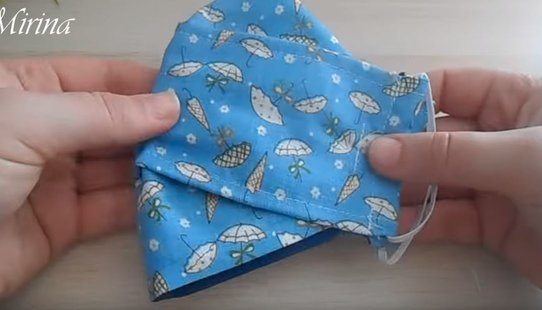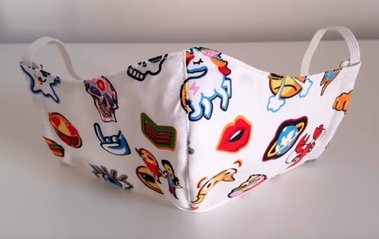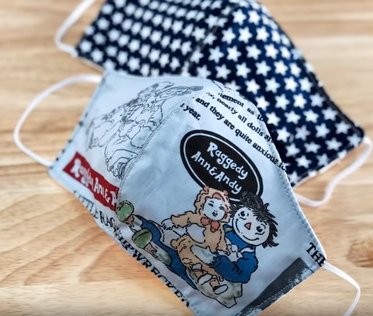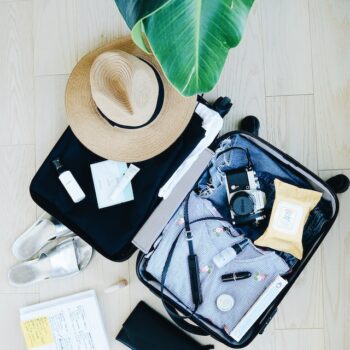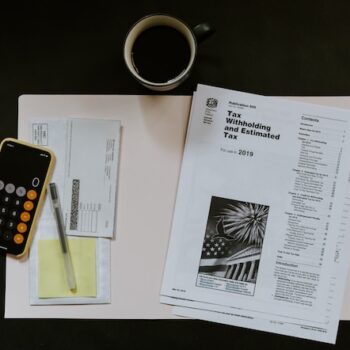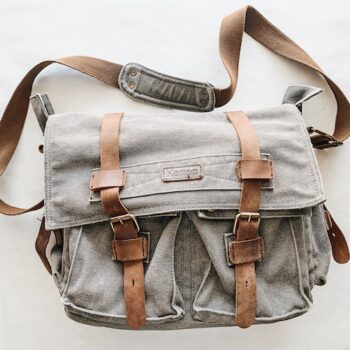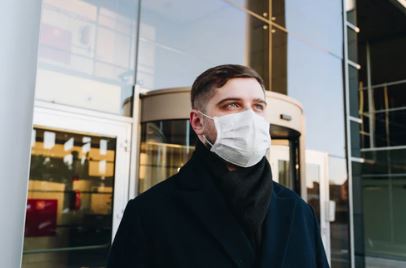
Important notes:
Before attempting to use any of the linked patterns and tutorials below to make your own mask, please know:
- If you want true protection from viruses, use a properly fitted medical N95 face mask which provides 95% particle protection. At best, a properly designed DIY mask provides 50% protection from particles (see study results below).
- If you are going to be wearing any type of mask, learn how to properly put it on and take if off. Your hands should be sanitized before you put on the mask, and when you adjust the nose bridge. You should ensure that there are no gaps or other areas where air can leak in or out of the mask. Sanitize your hands again before you remove the mask and then after removing the mask (only touch the ear loops). Don’t have hand sanitizer? Wash your hands the way surgeons wash their hands, or visit our DIY Homemade Disinfecting Hand Sanitizer Recipe Explained article to make your own.
- Do not touch the surface of the mask. When you inhale, you draw concentrations of contaminates into the surface of the mask. Either place the removed mask in a bag for future decontamination or dispose of the mask.
- If you will be using a homemade mask, have a concrete plan in place as to how you will disinfecting it after each use. A few disinfection options include using a 10% bleach solution or UVC light. See Using UVC Light To Sterilize And Disinfect Bacteria Viruses And Mold for more information.
- A DIY mask may be better than nothing, however, you should never assume a DIY mask makes it safer to be in an environment you would not normally enter without a mask. At best, a DIY mask provides 50% protection from particles. See the fabric filtration comparison below for selecting the right materials.
- The CDC recommends that, in a crisis situation, a homemade mask (or scarf/bandana) be used along with a face shield that shields the front and sides of your face.
- View the University of Hong Kong DIY Mask below to see how they attached a shield onto glasses. You could even use transparency film.
- If there is an extreme shortage of masks, consider making some extra masks for your elderly neighbors, as well as your region’s emergency responders and health care workers.
Important DIY Considerations
- The perimeter of the mask must be snug to the skin
-
- The ideal mask should conform to the shape of your face, including under the chin and the bridge of your nose
- There should be no gaps that might allow air to leak in when inhaling or leak out when exhaling
- It should stay snug and in position during normal activity (breathing, talking, moving head, bending over)
- It should conform to the nose bridge and under the chin
- It should be the appropriate size for the user (child or adult)
-
- The fabric or material should allow air exchange so that there is adequate pressure while breathing
- You should be able to able to breath comfortably. If it restricts air exchange, air will be pushed/leak out of the sides on exhale, air will be drawn in through any gaps on inhalation, and breathing will generally be more difficult.
- The fabric or material should filter out at least 50% of particles
- See fabric/material comparison below.
- Although some of the DIY masks provide a way to insert a filter, all the masks must be sanitized in between uses. Simply replacing the filter is not sufficient. After several hours of use, or when used in high risk locations, the surface of the mask can become highly contaminated.
Fabric/Material Comparison
We found plenty of great DIY homemade face mask guides and tutorials. However, most did not recommend a specific type of fabric. Here is some information to help guide you through your options.
In a study to evaluate the performance of homemade masks, they compared the effectiveness of household materials to filter out particles. The study concluded that a homemade mask should only be considered as a last resort, that a homemade mask was 3 times less effective than a surgical mask, but that a homemade DIY mask was better than nothing at all.
For reference, the coronavirus has an average particle size of 0.125 microns.
- A N95 mask can filter out 95-98% of particles 0.02 to 1 micron in size
- A surgical mask can filter out ~78% of particles 0.02 to 1 micron in size
- A linen dish towel (tea cloth) can filter out 60% of particles 0.02 to 1 micron in size
- Cotton t-shirts can filter can filter out 50% of particles 0.02 to 1 micron in size
A tightly woven cotton or cotton mix fabric with a slight “give” or stretch was considered the best option. Cotton barrier cloth or fabric is one of the more densely woven fabrics.
Compare fabrics by holding them over a light. The one that allows the least amount of light shine through should be used.
If you will be sanitizing the mask with a bleach solution after each use, and because many of the DIY masks have colorful patterns on them, it’s probably best to go with a white or plain bleach-safe fabric. If you will be disinfecting the mask with a UVC light, then your fabric can be as expressive and colorful as you’d like.
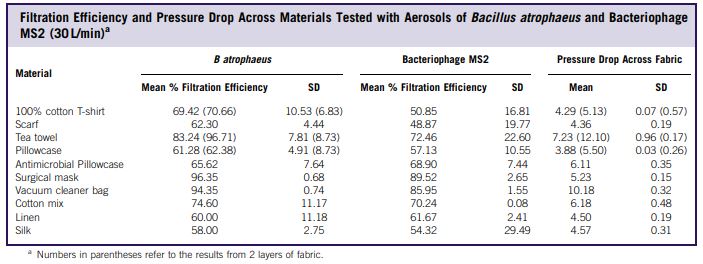
Anna Davies, Katy Anne Thompson, Karthika Giri, George Kafatos, Jimmy Walker and Allan Bennett Testing the Efficacy of Homemade Masks: Would They Protect in an Influenza Pandemic?. Disaster Medicine and Public Health Preparedness, Available on CJO 2013 doi:10.1017/dmp.2013.43
Some Considerations If You Wear Glasses
If you’ve been wearing a mask and notice that your glasses tend to fog up, you have a few options to minimize the fog. Doctors have been putting a strip of bandage over the section of mask across the bridge of their nose to successfully minimize the amount of fog buildup on their glasses. Another options are to place a thin adhesive strip of foam on the underside of the bridge portion of the mask to seal it off. Finally, if you’d prefer not to have a big strip of tape over the top of your mask, you can apply double-sided tape to the underside of the mask nose bridge which not only keeps the mask in place; it also reduces the amount of fog on your glasses.
DIY Face Mask Patterns
Here is a collection of DIY face mask patterns to get you started. There are several extremely simple patterns including 2 no-sew patterns, quite a few face masks without pleats, and others that are more face-conforming.
Oita Japan DIY 3D Homemade Mask
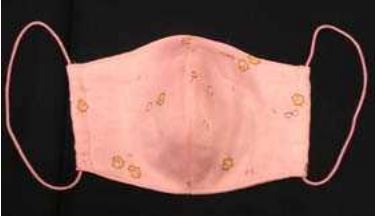
Supplies
- Gauze fabric (such as handkerchiefs or towels)
- Elastic bands
- Teknorote (memory wire)
The pattern template can be found here
They recommend disinfecting the mask in 2% bleach solution, then rinsing.
Link: https://www.pref.oita.jp/uploaded/attachment/2071167.pdf
No Sew Scarf Face Mask
This by far is the easiest mask to make that we’ve seen, but it does look like there are some gaps. Consider using a tea cloth instead of a scarf, add some memory wire to the top so that it conforms to the bridge of the nose, and be even better protected.
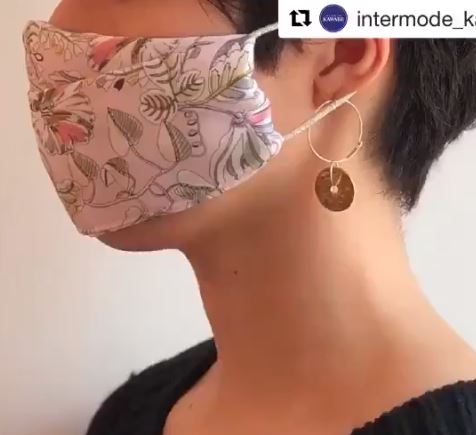
No Sew Scarf Face Mask
View the quick tutorial on Twitter
No Sew Quick T-Shirt Face Mask
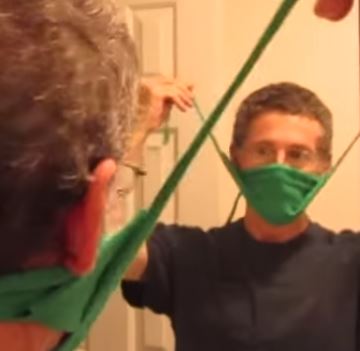
No Sew Face Mask
Honestly, this is probably the easiest, snuggest fitting mask yet. It uses a t-shirt (which is good as long as it is a tightly woven fabric). Maybe double the t-shirt fabric to increase particle filtration.
Link to the tutorial is here.
So Sew Easy Face Mask Sewing Patterns Roundup
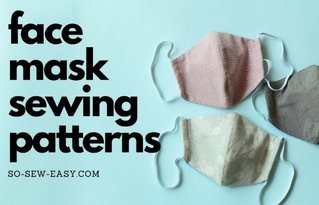
So Sew Easy Face Mask
Mirina Face Mask Tutorial (YouTube)
DIY Cloth Face Mask
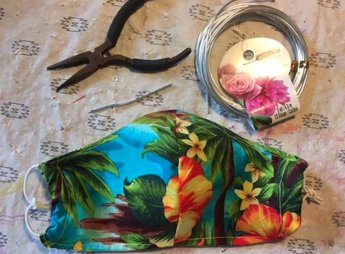
Diy Instructables Face Mask
Includes a downloadable PDF template
https://www.instructables.com/id/DIY-Cloth-Face-Mask/
University Of Hong Kong Paper Towel Face Mask
This tutorial includes an eye shield attached to glasses. Transparency film would possibly be a good option to use as the shield. We would recommend pleating the sides of the mask for a better fit.
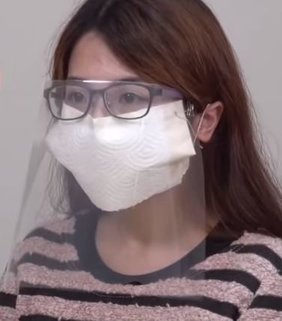
Hong Kong Face Mask
Valma Face Mask
The instructions are not in english, but the video if fairly easy to follow.
Stitching Scientist Pleated Face Mask
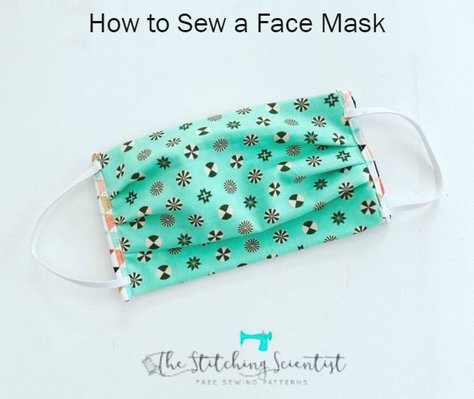
The pleated mask tutorial can be found here
Pooim Face Mask Tutorial
DIY Joy’s 5 Minute Face Mask
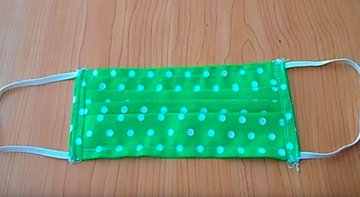
A quick, single layer face mask tutorial is available at DIY Joy
References:
https://www.ncbi.nlm.nih.gov/pmc/articles/PMC2440799/
https://m.box.com/shared_item/https%3A%2F%2Fstanfordmedicine.box.com%2Fv%2Fcovid19-PPE-1-1

